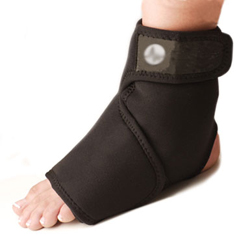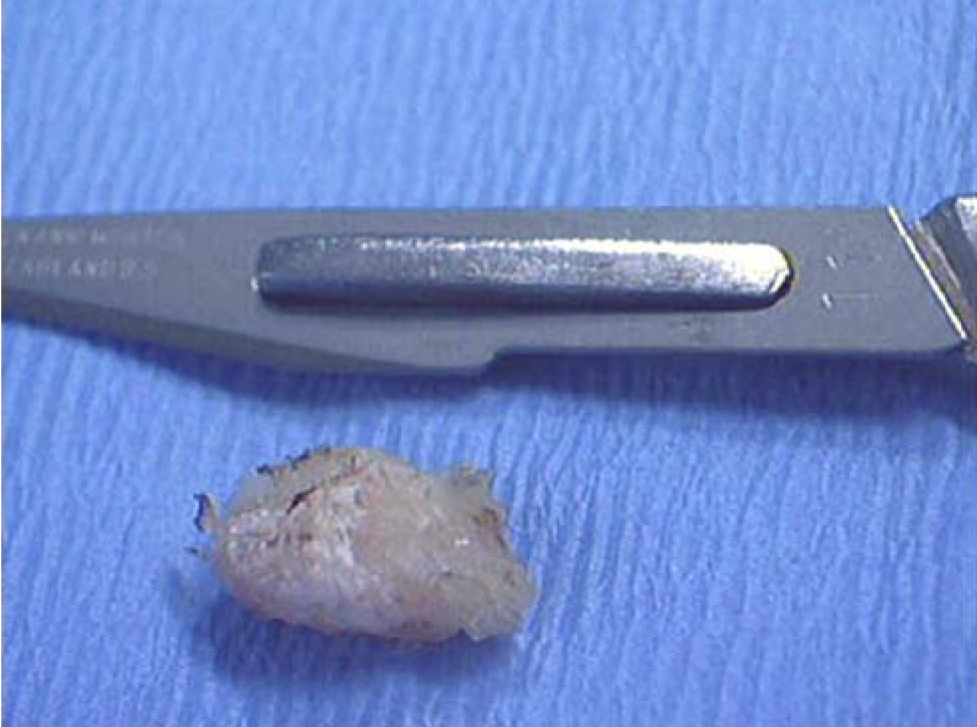Treatment
Management of posterior ankle impingement, regardless of the severity of the pain or lack of range of movement, will begin with conservative treatment 1,7,15,17. This implies a course of physiotherapy, and possibly the use of anti- inflammatory drugs. Non steroidal anti-inflammatory drugs may be used, or if the pain and inflammation is severe, a steroid injection may be administered to the inflamed tissues.
Conservative treatment will begin with a physiotherapist addressing the pain and inflammation in the affected areas around the ankle joint. Ice packs and ultrasound treatment may be used. Any activities that aggravate the condition will need to be avoided for a number of weeks, and a special strap or boot may be prescribed to restrict ankle motion during this period. When the inflamed tissue returns to normal, regular activities can gradually be reintroduced. |  An ankle brace may be used to restrict motion and compress the inflamed tissue. |
Four to five weeks of rest, and treatment for inflammation, is enough to relieve the majority of cases of posterior ankle impingement 15,13,17. The structures that become impinged when swollen typically do not become trapped during movement once the inflammation has passed. At this point, any factors which may have prompted the condition should be addressed to prevent a recurrence.
A physiotherapist should address any factors that may have predisposed the ankle to posterior impingement. A full assessment of the ankle is necessary. Posterior impingement can stem from abnormal ankle movements during activity, or from general ankle instability 7,13. The latter may occur after injury to the ankle, such as a tear of the anterior talo-fibular ligament (a ligament located on the front of the ankle). | _7428.jpg) A variety of exercises may be used to strengthen the ankle. Here, an unstable surface is used to help improve joint position awareness and improve balance. |
Maladaptive movement patterns need to be addressed – they may stem from muscle weakness or tightness of a specific muscle, or a lack of range of movement through a specific joint. If there is general ankle instability, proprioceptive training – training to increase the awareness of where the ankle is during movement – will help to prevent a reoccurrence of impingement 3.
In a small number of cases, conservative management will fail to adequately relieve symptoms and restore a normal range of motion. Medical imaging is useful in determining which structures are involved in these cases 15,13,17. A radiograph may uncover abnormal bony structures, but may not reveal the extent to which these structures are involved in the impingement of the soft tissue. An MRI will reveal where inflammatory activity is present and which tissues are affected.
Surgery is indicated in cases of posterior ankle impingent where conventional treatment is unresponsive. Open surgery allows for the partial or complete removal of damaged tissue, and the removal of bony tissue that may be involved in the impingement of the ankle 17. An open surgical technique requires a period of three weeks of immobilisation in a cast with no weight bearing.
|  A bone fragment has been removed to allow greater movement in the ankle. |
Open surgery is slowly being replaced by a less invasive arthroscopic technique. With this technique ankle range of motion can be checked during surgery, and there is better visualisation of the structures involved in the impingement. The post-surgery recovery time is also much shorter. Like open surgery, arthroscopy allows for the removal of damaged tissue, and reshaping of bony structures that are involved in the impingement of the joint. No cast is necessary post arthroscopic surgery, and weight bearing can commence within ten days 17.
Outcome The prospects for recovery from posterior ankle impingement depend on the specific tissues involved, the severity of the impingement and inflammation, and whether or not surgery is required. Most people make a full recovery. If conservative measures fail and arthroscopic surgery is required to correct the impingement, there is a high rate of success in returning the patient to regular activities with little or no complications. Most patients will be able to return to regular activities within six weeks post surgery, given that an appropriate rehabilitation program is put into action3,17. |  |